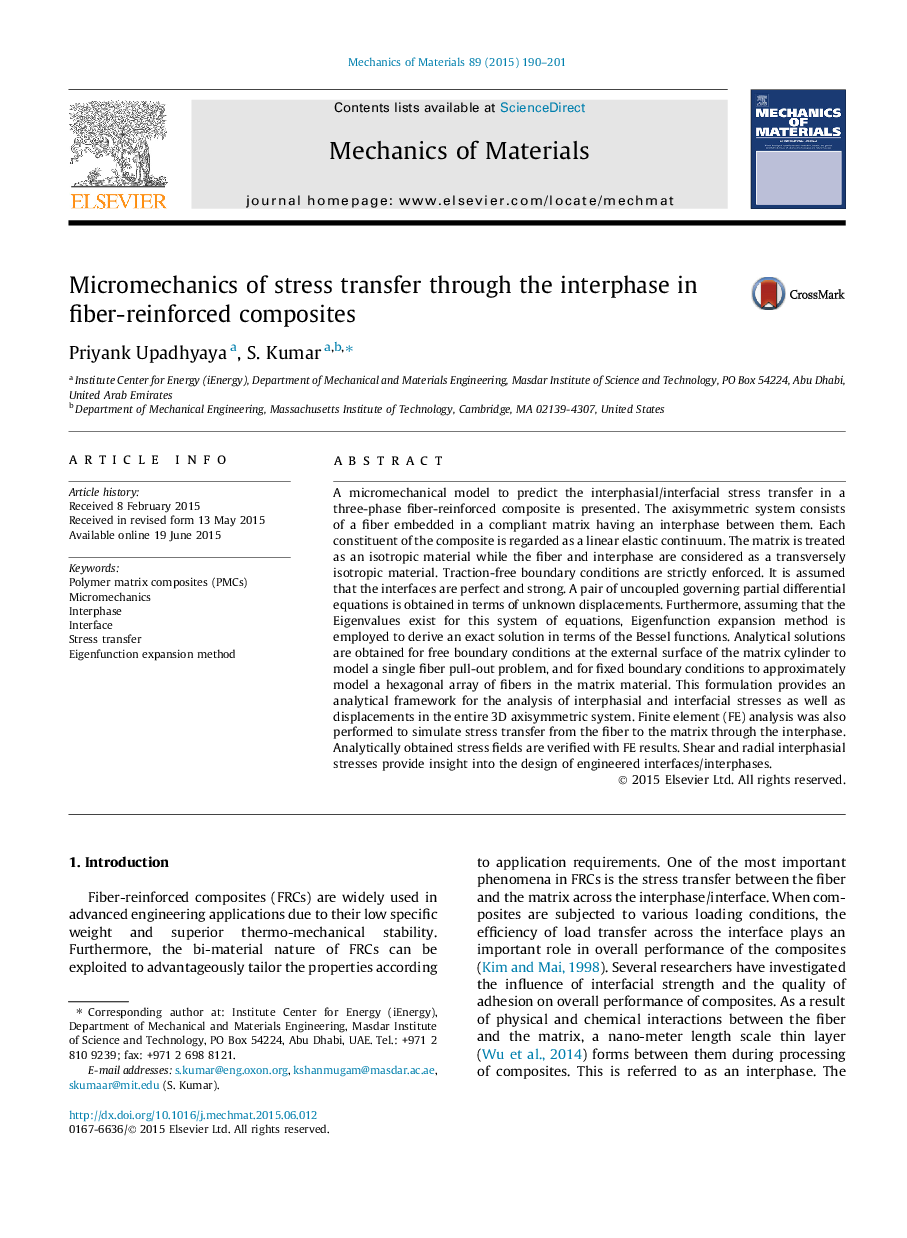| کد مقاله | کد نشریه | سال انتشار | مقاله انگلیسی | نسخه تمام متن |
|---|---|---|---|---|
| 800176 | 1467451 | 2015 | 12 صفحه PDF | دانلود رایگان |

• A full 3D axisymmetric micromechanical model is presented considering interfaces to be strong.
• An explicit interphase layer is modeled.
• Both fiber and interphase are regarded as a transversely isotropic continuum.
• Analytical results indicate that shear induced damage would initiate first within the interphase.
• Provides insight into the design of engineered interphases with graded properties.
A micromechanical model to predict the interphasial/interfacial stress transfer in a three-phase fiber-reinforced composite is presented. The axisymmetric system consists of a fiber embedded in a compliant matrix having an interphase between them. Each constituent of the composite is regarded as a linear elastic continuum. The matrix is treated as an isotropic material while the fiber and interphase are considered as a transversely isotropic material. Traction-free boundary conditions are strictly enforced. It is assumed that the interfaces are perfect and strong. A pair of uncoupled governing partial differential equations is obtained in terms of unknown displacements. Furthermore, assuming that the Eigenvalues exist for this system of equations, Eigenfunction expansion method is employed to derive an exact solution in terms of the Bessel functions. Analytical solutions are obtained for free boundary conditions at the external surface of the matrix cylinder to model a single fiber pull-out problem, and for fixed boundary conditions to approximately model a hexagonal array of fibers in the matrix material. This formulation provides an analytical framework for the analysis of interphasial and interfacial stresses as well as displacements in the entire 3D axisymmetric system. Finite element (FE) analysis was also performed to simulate stress transfer from the fiber to the matrix through the interphase. Analytically obtained stress fields are verified with FE results. Shear and radial interphasial stresses provide insight into the design of engineered interfaces/interphases.
Journal: Mechanics of Materials - Volume 89, October 2015, Pages 190–201